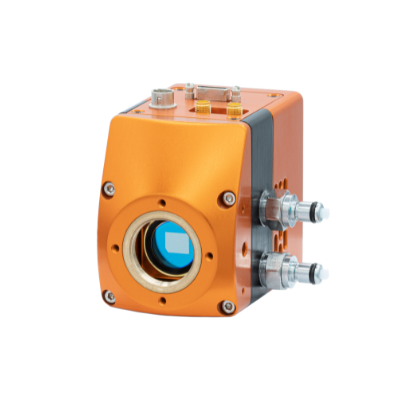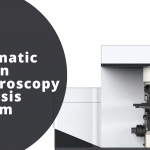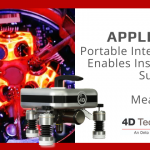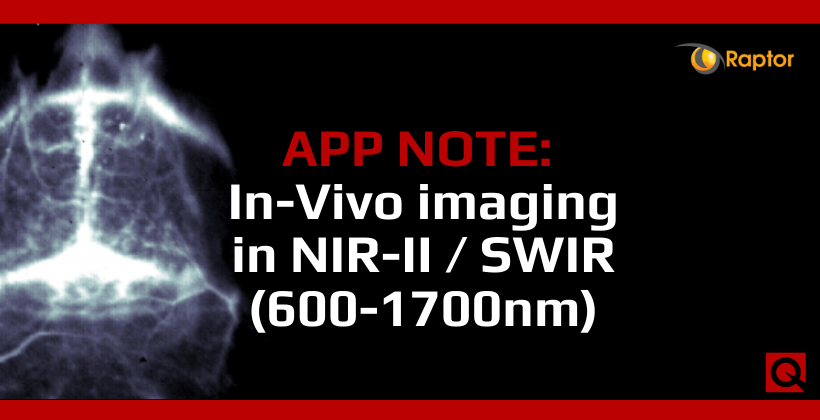

Non-invasive fluorescence imaging of small animals has been a technique widely used for years as a method in preclinical research. Techniques have developed considerably in recent years, but still face a number of limitations.
Researchers detecting in the 500-900 nm range suffer from shallow imaging depth and high background due to light scattering and tissue autofluorescence. Over the last five years there has been a growing interest in NIR-II/SWIR imaging detecting in the 1000-1700 nm range to greatly suppress these effects, affording single cell resolution at ~ 3 mm depth and useful resolving power at up to ~ 1 cm depth.
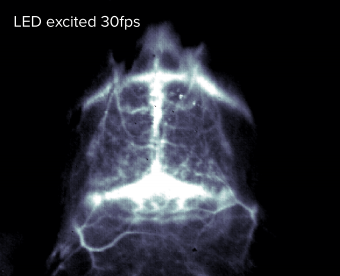

This interest has been fuelled by the development of NIR-II markers / probes (molecules, carbon nanotubes, quantum dots and rare-earth down-conversion nanoparticles) which provide a great combination of sensitivity, inherent biological safely, and relative ease of use. (see Nirmidas Biotech, Inc’s variety of dye materials.)
Introducing these probes into the systems of small animals enables researchers to see more in terms of pathophysiological processes. The goal is in evaluating the biodistribution, pharmacokinetics and biological activity of potentially therapeutics molecules that will identify and fight tumours. Deep tissue molecular imaging with diffraction limited resolution at the single cell level can also facilitate basic research in biology and medicine. But to do so efficiently requires a SWIR optimised camera.
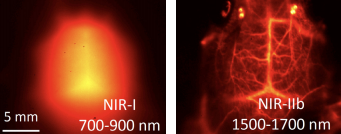

Based on original inventions from Stanford University, a US based company, Nirmidas Biotech Inc. in Palo Alto California has developed and commercialised a series of near infra-red II (NIR-II) organic dye and inorganic probe products suitable for in vivo, ex vivo and in vitro imaging applications.
To complement these dyes and probes, Nirmidas has also developed DeepVision™, a non-invasive in vivo fluorescence Imaging platform. This can be used to image small animals for vasculature, tumour, brain, lymphatic/lymph node imaging and molecular imaging, empowering research to interrogate cardiovascular, cancer, brain and immune diseases. Commercialised applications include diagnostics and imaging for early disease diagnosis, prognosis monitoring, population screening, and therapeutics.
The DeepVision™ system is a high performance and cost effective NIR-II/SWIR fluorescence/ luminescence system with multiple, customisable lasers. It is the only small imaging system detecting in both NIR-I and NIR-II windows: wavelength of imaging spans 400 nm – 1700 nm with high detection efficiency in NIR-II 1000 – 1700 nm range.
Raptor has been developing InGaAs cameras for years. The Ninox family of cooled InGaAs cameras enable longer integration times. These cameras are available in various resolutions and pixel sizes. As well as being compact and low power, they provide high sensitivity, ultra-low noise images in visible and SWIR wavelengths. Raptor has worked closely with Nirmidas to develop the right camera choice for DeepVision, the Ninox 640-II.
Images courtesy from a Project that developed the downconversion ErNP technology commercialized by Nirmidas Biotech, Inc
- VIS-SWIR InGaAs technology | Enables imaging from 0.6μm to 1.7μm • Cooled to -15°C | Allows longer integration avoiding dark current build-up
- Ultra-Low Noise Sensor: 18e- in High Gain | Enables ultimate low light Vis-SWIR image
- 15µm x 15µm pixel pitch | Enables the highest resolution SWIR image
- Ultra high intrascene dynamic range | Enables simultaneous capture of bright & dark portions of a scene
- Onboard Automated Gain Control (AGC) | Enables clear video in all light conditions
- Ultra compact, Low power | Ideal for embedding into OEM systems


Contact our Camera Sales Engineer, Luke Nicholls – luke@qd-uki.co.uk or call 01372 378822



